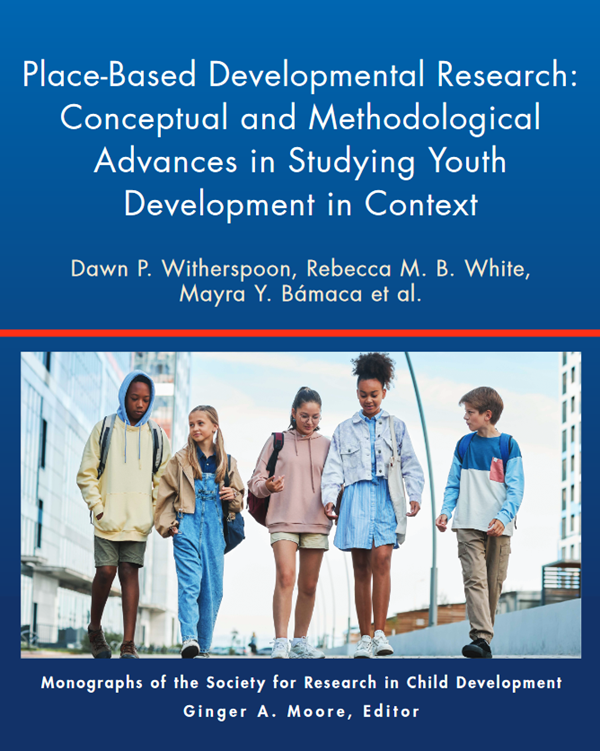博物馆中的探索、讲解与亲子互动。
摘要
幼儿通过日常家庭对话和活动发展因果知识。儿童博物馆是研究因果学习的社会背景的一个信息丰富的场所,因为家庭成员在博物馆玩耍时共同参与日常的科学思考。在这个多地点的合作项目中,我们研究了在博物馆展览中家庭互动背景下儿童因果思维的发展。我们专注于解释和探索作为亲子互动的两个基本合作过程,调查家庭如何在普罗维登斯,RI,圣何塞,CA和奥斯汀,德克萨斯州的三个儿童博物馆的gear展览中解释和探索开放式合作。我们的主要研究问题检查了(a)开放式家庭探索和解释如何相互关联以形成儿童学习的动力;(b)使用不同互动方式的家庭的这种动态是如何不同的,并且与家庭的科学背景等背景因素有关,以及(c)当给予更多结构化任务时,这种动态如何预测儿童的独立因果思维。我们总结了关于探索、解释和亲子互动(PCI)风格的发现。然后,我们展示了这些指标如何相互关联的发现,最后,这种动态如何预测儿童的因果思维。在研究儿童的探索过程中,我们描述了两种对因果思维具有重要意义的行为:(a)系统探索:连接齿轮形成齿轮机,然后旋转齿轮机。(b)坚决行为:解决问题的行为,在这种行为中,孩子们试图连接或旋转一组特定的齿轮,遇到障碍,然后坚持成功(而不是转移到另一个行为)。年龄较大的儿童比年龄较小的儿童更多地从事这两种行为,并且这些行为的比例彼此相关。家长和孩子们一边与展品互动,一边相互交谈。我们编码了因果语言,以及其他类型的话语。父母的因果语言预测了孩子的因果语言,与年龄无关。父母因果语的比例也预测了孩子系统探索的比例。儿童的坚决行为与父母的因果语言不相关,但与儿童自己谈论的行为和展览相关。接下来,我们考虑是谁在更全面地衡量亲子互动风格中为游戏设定目标,在他们彼此的互动中,将二人组确定为父母导向、孩子导向或共同导向。不同亲子互动方式的孩子进行不同数量的系统探索,父母使用不同数量的因果语言。在三种亲子互动方式中,坚决的行为和与儿童参与此类故障排除相关的语言似乎更加一致。使用一般的线性混合建模,我们考虑了动作和谈话序列之间的关系。我们发现,父母使用因果语言的时机对孩子是否进行系统的探索至关重要。只有当父母的因果对话发生在旋转齿轮的行为之前(当孩子们在建造齿轮机的时候),父母的因果对话才能预测孩子的系统探索。我们没有观察到因果语言与儿童旋转同时发生或之后的影响。同样,孩子们对他们的行为的谈论和展品预测了他们的果断行为,但只有当谈话发生在孩子遇到问题的时候。没有发现谈话同时发生或解决问题后的模型的影响。最后,我们考虑了如何解释和探索与儿童因果思维的关系。我们分析了儿童关于齿轮的因果思维的测量和一套新颖齿轮的自由游戏测量。主成分分析揭示了这些测量中因果思维的潜在因素。结构方程模型考察了父母的科学背景如何影响儿童的系统探索、父母的因果语言和亲子互动方式,以及这些因素如何预测儿童的因果思维。在一个包含儿童年龄和性别的完整模型中,儿童的系统探索与儿童的因果思维有关。总的来说,这些数据表明,儿童的系统探索和父母的因果解释是相互关联的,因为两者都有助于儿童在博物馆展览中玩耍时的学习。孩子们进行系统的探索,这支持了他们的因果思维。在互动过程中,父母的因果对话在特定时间出现时,会支持孩子的探索。 相比之下,儿童对问题解决的坚持对父母的谈话或互动方式不太敏感,而更多地与儿童自己的语言有关,这可能是一种自我解释的形式。我们根据正在进行的促进亲子互动对儿童学习和解决问题的益处的方法来讨论这些发现。我们还研究了这些发现对正式和非正式学习环境的影响,以及在儿童因果思维研究中建构主义和社会文化方法的理论整合。Young children develop causal knowledge through everyday family conversations and activities. Children's museums are an informative setting for studying the social context of causal learning because family members engage together in everyday scientific thinking as they play in museums. In this multisite collaborative project, we investigate children's developing causal thinking in the context of family interaction at museum exhibits. We focus on explaining and exploring as two fundamental collaborative processes in parent-child interaction, investigating how families explain and explore in open-ended collaboration at gear exhibits in three children's museums in Providence, RI, San Jose, CA, and Austin, TX. Our main research questions examined (a) how open-ended family exploration and explanation relate to one another to form a dynamic for children's learning; (b) how that dynamic differs for families using different interaction styles, and relates to contextual factors such as families' science background, and (c) how that dynamic predicts children's independent causal thinking when given more structured tasks. We summarize findings on exploring, explaining, and parent-child interaction (PCI) styles. We then present findings on how these measures related to one another, and finally how that dynamic predicts children's causal thinking. In studying children's exploring we described two types of behaviors of importance for causal thinking: (a) Systematic Exploration: Connecting gears to form a gear machine followed by spinning the gear machine. (b) Resolute Behavior: Problem-solving behaviors, in which children attempted to connect or spin a particular set of gears, hit an obstacle, and then persisted to succeed (as opposed to moving on to another behavior). Older children engaged in both behaviors more than younger children, and the proportion of these behaviors were correlated with one another. Parents and children talked to each other while interacting with the exhibits. We coded causal language, as well as other types of utterances. Parents' causal language predicted children's causal language, independent of age. The proportion of parents' causal language also predicted the proportion of children's systematic exploration. Resolute behavior on the part of children did not correlate with parents' causal language, but did correlate with children's own talk about actions and the exhibit. We next considered who set goals for the play in a more holistic measure of parent-child interaction style, identifying dyads as parent-directed, child-directed, or jointly-directed in their interaction with one another. Children in different parent-child interaction styles engaged in different amounts of systematic exploration and had parents who engaged in different amounts of causal language. Resolute behavior and the language related to children engaging in such troubleshooting, seemed more consistent across the three parent-child interaction styles. Using general linear mixed modeling, we considered relations within sequences of action and talk. We found that the timing of parents' causal language was crucial to whether children engaged in systematic exploration. Parents' causal talk was a predictor of children's systematic exploration only if it occurred prior to the act of spinning the gears (while children were building gear machines). We did not observe an effect of causal language when it occurred concurrently with or after children's spinning. Similarly, children's talk about their actions and the exhibit predicted their resolute behavior, but only when the talk occurred while the child was encountering the problem. No effects were found for models where the talk happened concurrently or after resolving the problem. Finally, we considered how explaining and exploring related to children's causal thinking. We analyzed measures of children's causal thinking about gears and a free play measure with a novel set of gears. Principal component analysis revealed a latent factor of causal thinking in these measures. Structural equation modeling examined how parents' background in science related to children's systematic exploration, parents' causal language, and parent-child interaction style, and then how those factors predicted children's causal thinking. In a full model, with children's age and gender included, children's systematic exploration related to children's causal thinking. Overall, these data demonstrate that children's systematic exploration and parents' causal explanation are best studied in relation to one another, because both contributed to children's learning while playing at a museum exhibit. Children engaged in systematic exploration, which supported their causal thinking. Parents' causal talk supported children's exploration when it was presented at certain times during the interaction. In contrast, children's persistence in problem solving was less sensitive to parents' talk or interaction style, and more related to children's own language, which may act as a form of self-explanation. We discuss the findings in light of ongoing approaches to promote the benefit of parent-child interaction during play for children's learning and problem solving. We also examine the implications of these findings for formal and informal learning settings, and for theoretical integration of constructivist and sociocultural approaches in the study of children's causal thinking.

 求助内容:
求助内容: 应助结果提醒方式:
应助结果提醒方式:


